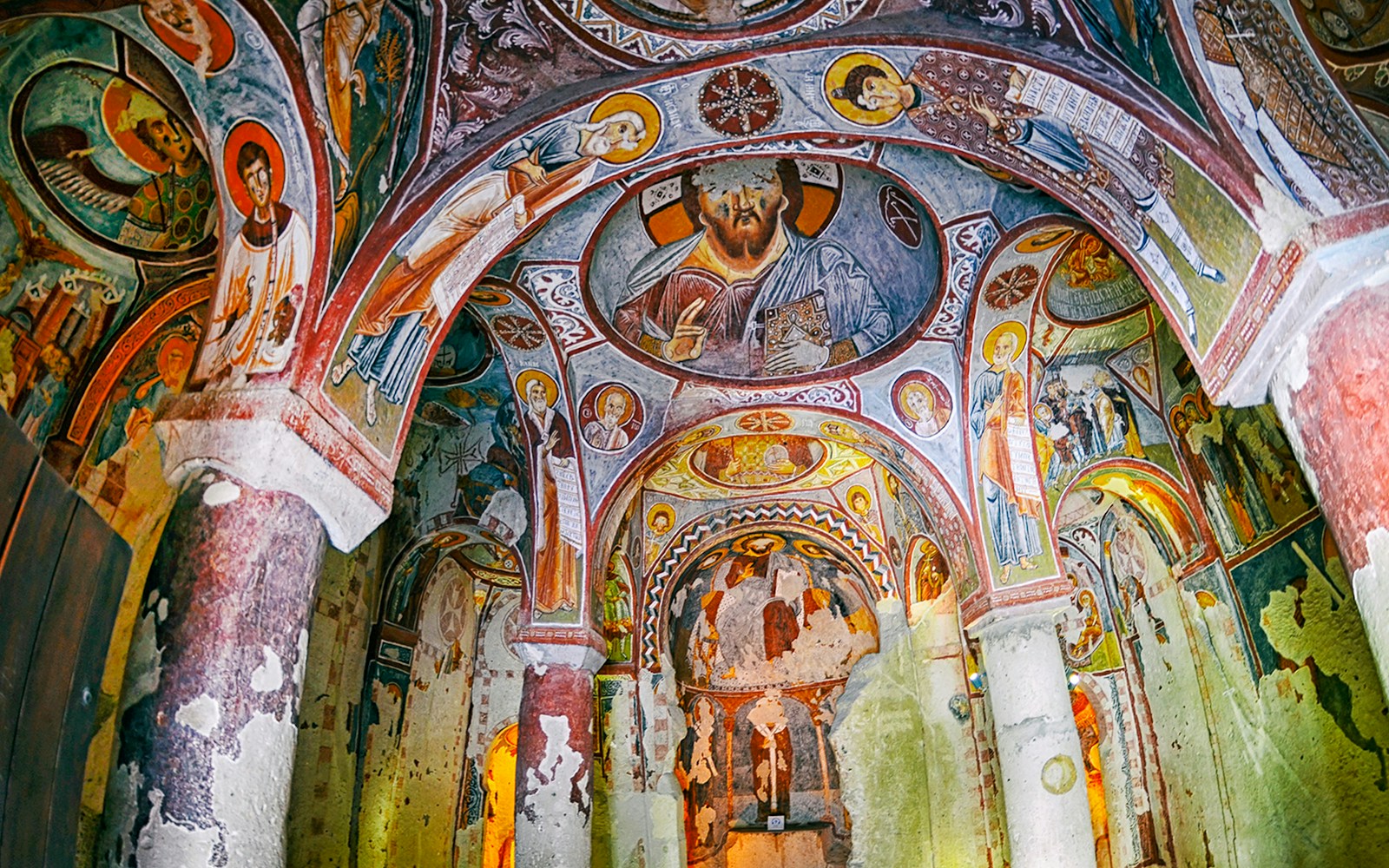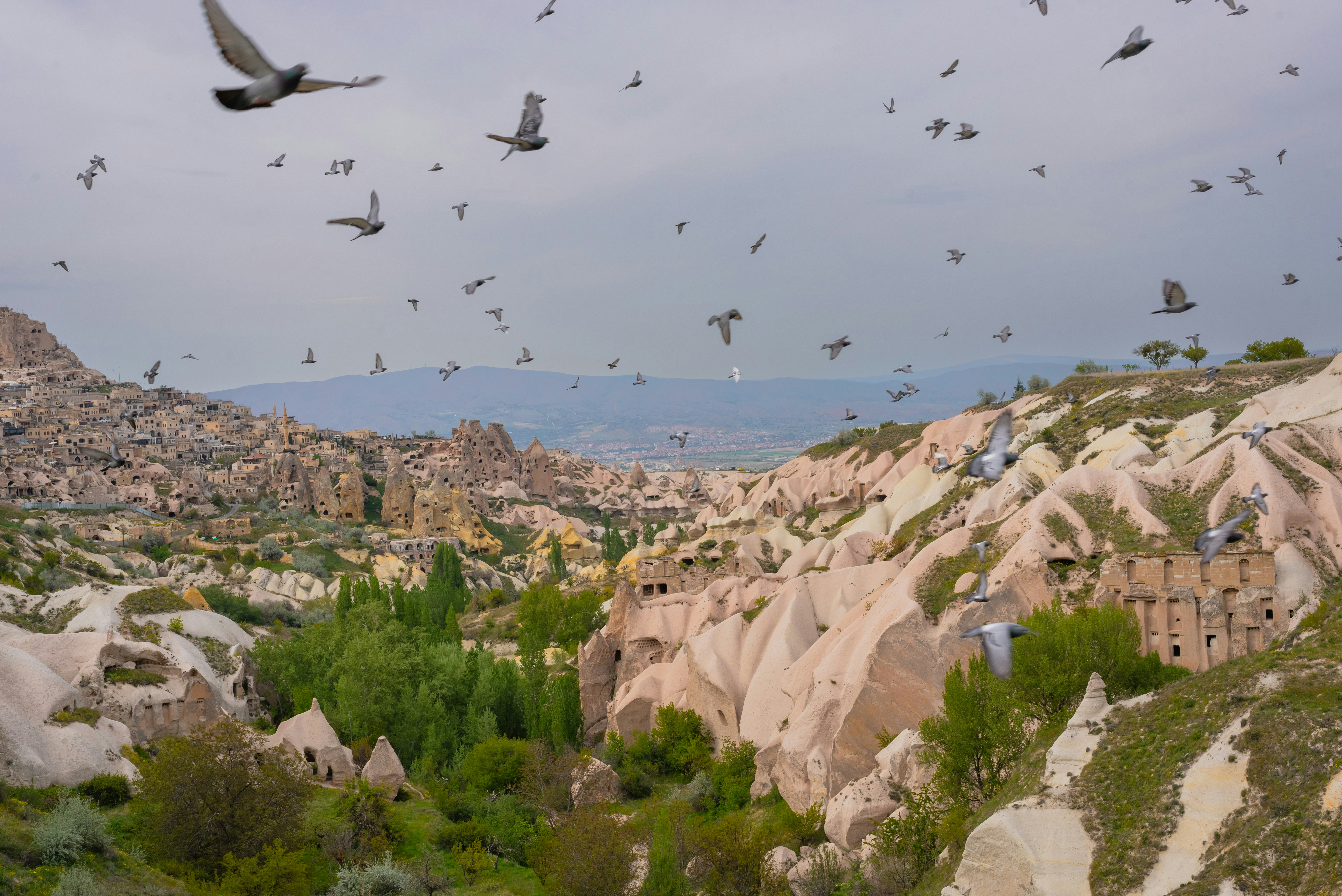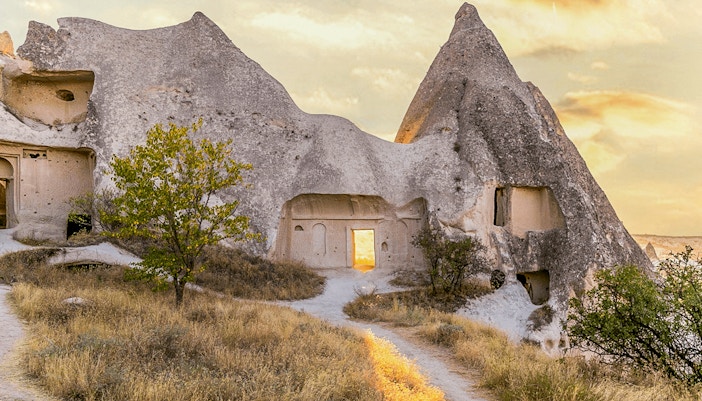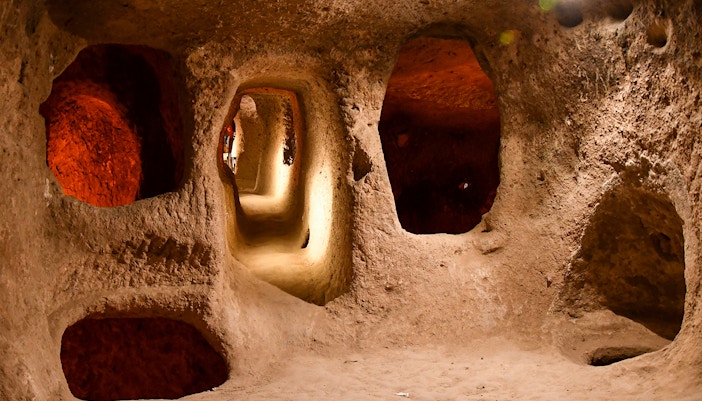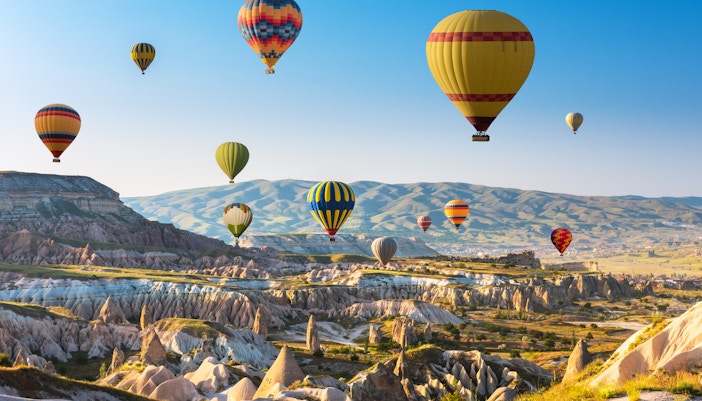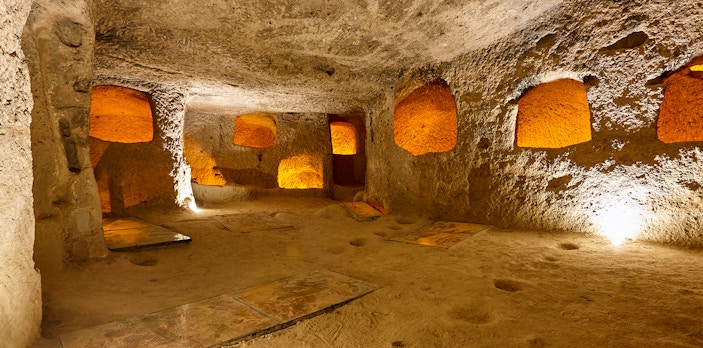While the Green Tour focuses more on the southern Cappadocia region, it still complements your understanding of Goreme’s cave dwellings. You’ll explore an underground city, trek through Ihlara Valley, and see how communities carved homes both above and below ground, giving context to Goreme’s own rock-cut lifestyle.
Top things to see in Goreme Valley cave dwellings
Goreme Open-Air Museum
A complex of rock-cut churches, monasteries, refectories, and dwellings with remarkable frescoes, the most visited site in Cappadocia, and a major reason Goreme National Park holds UNESCO World Heritage status. Expect vivid Byzantine paintings, carved chapels, naves, and monastic rooms that show what daily life looked like centuries ago. Some areas require an additional ticket (such as the Dark/Black Church), and a guided visit or audio guide helps you understand the symbolism and history behind each chapel.
Nearby rock churches & chapels
A number of historically important cave churches sit right around Goreme, each offering unique frescoes and architectural details. Tokali (Buckle) Church is known for its vibrant fresco cycles and detailed storytelling panels covering scenes from the New Testament. Elmali, St. Barbara & Cavusin Churches are smaller but atmospheric chapels featuring cross plans, geometric motifs, and early iconographic styles. Many of these can be reached on foot or with a short taxi ride from Goreme.
Cave homes & boutique cave hotels
Beyond the historic dwellings, Goreme is dotted with renovated cave homes that have been transformed into boutique hotels. Staying in one is part of the Cappadocia experience — think curved stone interiors, natural insulation that keeps rooms cool, cave-style suites, and rooftop terraces overlooking the valleys. Some properties also feature cave spas, panoramic breakfast decks, and restored family dwellings that show how people once lived inside the rock.
Photo & viewpoint spots
Goreme offers some of the region’s most iconic photo locations. At sunrise balloon viewpoints, watch dozens of hot-air balloons rising over the cave dwellings and fairy chimneys. Sunset panorama points provide wide, elevated viewpoints around Goreme where the rock formations glow orange and pink at dusk. Love, Rose & Pigeon Valleys: Walk or drive to these nearby valleys for close-up shots of fairy chimneys, narrow cave entrances, and eroded cliffs.
Valley walking trails with scattered cave dwellings
Goreme’s surrounding valleys, especially Zemi, Meskendir, Red, and Rose Valley, are filled with smaller, often unmarked cave rooms, pigeon houses, and remains of old dwellings carved into cliff walls. These trails let you experience the landscape at a slower pace: narrow paths winding between rock towers, natural arches, and hidden chapels that you wouldn’t see from the main roads.
Ancient pigeon houses carved into cliffs
All around Goreme you’ll notice small, square openings carved high up in the rock. These are historic pigeon houses. Locals carved and decorated them centuries ago to collect pigeon droppings, which were used as natural fertilizer for vineyards. Many of these carved facades still survive, especially in Pigeon Valley, offering a glimpse into traditional farming practices and the clever ways communities used the landscape.

